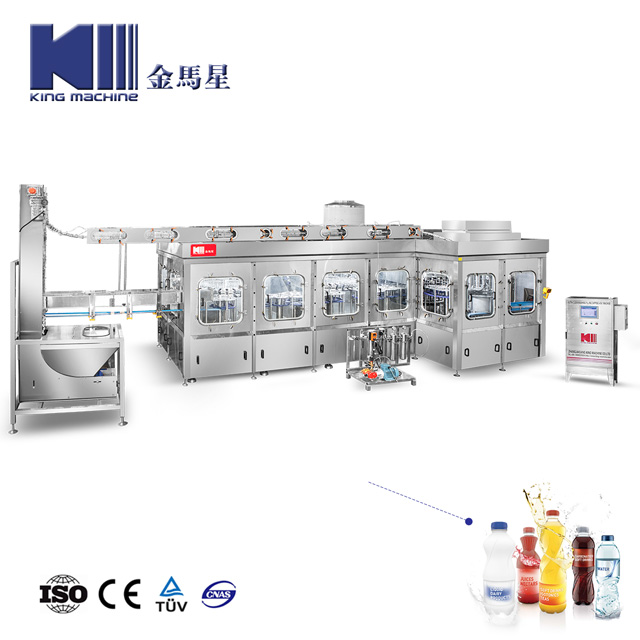News
Site Editor
 Site
/uploads/image/6454bbd2e50a2.png
When it comes to packaging processes in industries such as food and pharmaceuticals, maintaining product safety is crucial. Two commonly used methods—sterile filling and aseptic filling—often cause confusion due to their similar objectives but distinct procedures. This article explores the differences, applications, and advantages of these techniques, helping you make an informed choice for your industry needs.
Site
/uploads/image/6454bbd2e50a2.png
When it comes to packaging processes in industries such as food and pharmaceuticals, maintaining product safety is crucial. Two commonly used methods—sterile filling and aseptic filling—often cause confusion due to their similar objectives but distinct procedures. This article explores the differences, applications, and advantages of these techniques, helping you make an informed choice for your industry needs.
What is the Difference Between Sterile and Aseptic Filling?
Views: 1837
Author: Site Editor
Publish Time: 2024-11-01
Origin: Site
When it comes to packaging processes in industries such as food and pharmaceuticals, maintaining product safety is crucial. Two commonly used methods—sterile filling and aseptic filling—often cause confusion due to their similar objectives but distinct procedures. This article explores the differences, applications, and advantages of these techniques, helping you make an informed choice for your industry needs.
1. What is Sterile Filling?
Sterile filling involves packaging products that have undergone sterilization in an environment designed to eliminate all forms of microbial life. Sterilization methods often include heat, chemicals, or filtration. This technique is primarily used in industries requiring the highest levels of cleanliness, such as:
Pharmaceuticals: Vaccines, injectables, and ophthalmic solutions.
Medical Devices: Surgical tools and implants.
Food Products: Certain canned or bottled goods requiring extended shelf life.
The sterile filling process ensures both the product and its container are free from microorganisms before sealing, providing a contamination-free final product.
2. What is Aseptic Filling?
Aseptic filling, on the other hand, maintains sterility throughout the packaging process without exposing the product to contaminants. The process involves:
Sterilizing the product and packaging separately.
Conducting the filling in a controlled, sterile environment.
Using advanced sealing techniques to ensure the product remains sterile.
Aseptic filling is widely used for products sensitive to heat or requiring long shelf lives, such as:
Dairy Products: Milk and yogurt.
Beverages: Juices and plant-based drinks.
Processed Foods: Soups, sauces, and purées.
Click to read the aseptic filling process article
3. Key Differences Between Sterile and Aseptic Fillings
Understanding the differences between sterile and aseptic fillings is essential for selecting the appropriate method:
| Aspect | Sterile Filling
| Aseptic Filling |
| Preparation Process | Complete sterilization of product and container. | Sterilization occurs separately before filling. |
| Environment | Conducted in a sterile cleanroom. | Done in aseptic zones with controlled airflows. |
| Applications | Ideal for pharmaceuticals and surgical tools. | Common for heat-sensitive food and beverages. |
| Cost and Complexity | High due to stringent sterilization methods. | Moderate, with specialized equipment requirements. |
4. Advantages and Disadvantages
Advantages of Sterile Filling:
Offers the highest safety for highly sensitive products.
Ideal for products requiring absolute sterility.
Disadvantages of Sterile Filling:
Expensive setup and maintenance.
Time-consuming sterilization process.
Advantages of Aseptic Filling:
Preserves the nutritional value and taste of products.
Efficient for high-volume production of perishable goods.
Disadvantages of Aseptic Filling:
Requires skilled operators and precise control.
Initial setup can be costly.
5. Common Misconceptions
Many people confuse the terms "sterile" and "aseptic," assuming they are interchangeable. However, the difference lies in their processes and applications:
Sterile filling achieves sterility before and during filling.
Aseptic filling maintains sterility during the process without prior sterilization of the final assembly.
Understanding these distinctions can prevent errors in selecting the correct filling method.
6. Conclusion
Both sterile and aseptic fillings play vital roles in ensuring product safety and quality across industries. Sterile filling is suited for highly sensitive items like pharmaceuticals, while aseptic filling is ideal for food and beverage products requiring extended shelf life. By choosing the appropriate method based on your product and industry requirements, you can ensure optimal safety, compliance, and cost-effectiveness.
King Machine is a professional aseptic filling equipment manufacturer. At King Machine, we pride ourselves on delivering cutting-edge solutions for the beverage industry. Our milk aseptic filling machines and juice aseptic filling machines are designed to preserve the freshness, flavor, and nutritional value of your products while ensuring maximum safety and extended shelf life. With advanced sterilization technology, precise filling systems, and energy-efficient operations, our machines are trusted by leading milk and juice producers worldwide. Whether you're looking to boost production efficiency or meet stringent quality standards, King Machine's aseptic filling solutions are the perfect choice.







